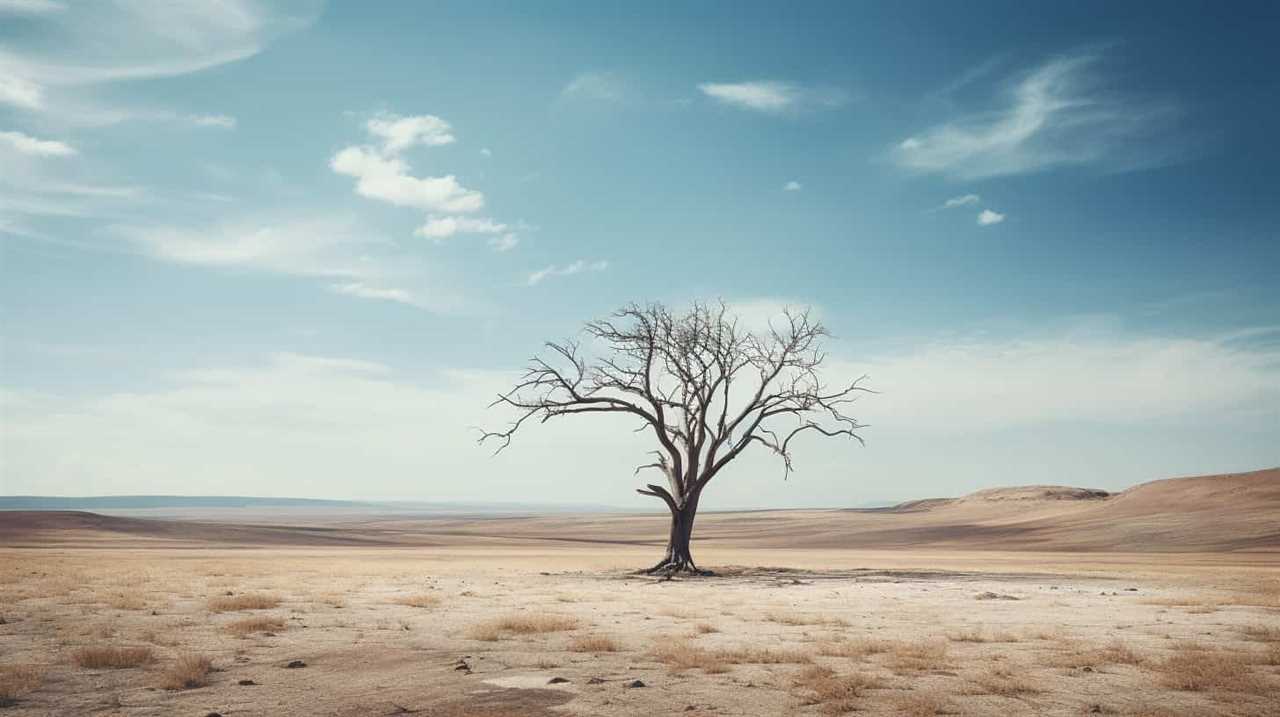We are here to investigate the impact of comprehensive SEO on the field of fashion influencer marketing.
Did you know that 93% of online experiences begin with a search engine? That’s why it’s crucial for fashion brands to build an effective SEO strategy and collaborate with influential figures in the industry.
By leveraging social media platforms and staying up-to-date with trends, we can help you become a successful holistic SEO fashion influencer marketer.
Let’s dive in!

Key Takeaways
- Holistic SEO enhances website visibility and drives targeted traffic.
- Fashion influencers have a significant impact on sales and driving conversions.
- Maintaining authenticity and sponsorship balance is crucial in influencer marketing.
- Social media platforms play a crucial role in fashion marketing, allowing brands to engage with a vibrant and diverse community and increase brand awareness.
The Power of Holistic SEO
One of the key benefits of holistic SEO is that it enhances our website’s visibility and drives targeted traffic to our fashion influencer marketing campaigns. In the digital marketing landscape, where competition is fierce and trends change rapidly, it’s crucial to understand the importance of holistic SEO. By adopting a holistic approach, we can optimize our website and content to rank higher on search engine results pages (SERPs), attracting more organic traffic and potential customers.
Understanding the role of keywords in holistic SEO is essential for success. Keywords are the foundation of any SEO strategy as they help search engines understand the relevance of our content. By conducting thorough keyword research and incorporating them strategically throughout our website, we can improve our chances of appearing in the top search results. Additionally, using long-tail keywords – specific phrases that target a narrower audience – allows us to attract highly relevant traffic and increase conversion rates.
Holistic SEO goes beyond keywords and encompasses various aspects such as website design, user experience, and content quality. By optimizing these elements, we can’t only improve our search engine rankings but also create a seamless and engaging experience for our audience. This holistic approach not only boosts our visibility but also enhances our brand reputation, leading to increased brand awareness and customer trust.
Understanding Fashion Influencer Marketing
When it comes to fashion influencer marketing, understanding the impact influencers have on sales is crucial. By leveraging the reach and influence of these individuals, brands are able to tap into new audiences and drive conversions.

However, there’s a delicate balance between authenticity and sponsorship that must be maintained to ensure the effectiveness of influencer partnerships.
Additionally, measuring the return on investment (ROI) of these collaborations is essential to determine their success and make informed decisions for future marketing strategies.
Influencer Impact on Sales
Our research shows that fashion influencers have a significant impact on sales, driving consumer purchasing decisions and increasing brand revenue. In today’s digital age, consumers are constantly bombarded with advertising messages, making it more difficult for brands to capture their attention. However, fashion influencers have the ability to cut through the noise and connect with their followers on a personal level. They have built a loyal and engaged audience who trust their recommendations and value their opinions. When influencers promote a brand or product, their followers are more likely to consider making a purchase. This influencer marketing effectiveness can be seen in the increase in consumer behavior, as followers are inspired by the influencers’ style and lifestyle choices. To illustrate the impact of fashion influencers on sales, we have created a table showcasing some key statistics:
| Statistic | Percentage |
|---|---|
| Influencers who have directly impacted a purchase | 78% |
| Consumers who trust influencer recommendations more than traditional ads | 63% |
| Increase in brand revenue due to influencer marketing | 42% |
| Consumers who have made a purchase after seeing an influencer post | 81% |
These statistics clearly demonstrate the power of fashion influencers in influencing consumer behavior and driving sales. As the digital landscape continues to evolve, brands must recognize the value of collaborating with influencers to reach their target audience and achieve their sales goals.

Authenticity Vs. Sponsorship
In our exploration of fashion influencer marketing, we delve into the complex dynamics between authenticity and sponsorship. Authenticity is a key factor in influencer marketing as it establishes trust and credibility with the audience. However, when sponsorship comes into play, it can sometimes blur the lines between genuine recommendations and paid promotions.
Considerations for authenticity in influencer marketing:
- Transparency: Influencers should clearly disclose their partnerships and sponsored content to maintain transparency with their audience.
- Value alignment: Brands should partner with influencers whose values align with their own, ensuring that the content feels authentic and genuine to the influencer’s brand.
- Ethical considerations in sponsored content: It’s important for both influencers and brands to ethically create and promote sponsored content, ensuring that it provides value to the audience and maintains the influencer’s integrity.
As we explore the concept of authenticity versus sponsorship, it’s crucial to understand the ethical considerations in sponsored content.
Now, let’s delve into the next section, where we discuss measuring influencer ROI.

Measuring Influencer ROI
To accurately gauge the success of fashion influencer marketing campaigns, we need to measure the return on investment (ROI) using data-driven analysis. Calculating influencer ROI allows brands to assess the effectiveness of their influencer marketing efforts and make informed decisions about future campaigns.
One way to measure influencer ROI is by tracking key performance indicators (KPIs). These can include metrics such as engagement rate, reach, website traffic, and conversions. By comparing these metrics to the investment made in the influencer campaign, brands can determine whether the campaign has generated a positive ROI.
To make it easier for you, here’s a table that illustrates the process of calculating influencer ROI:
| Metrics | Calculation |
|---|---|
| Engagement Rate | Total engagements / Total followers |
| Reach | Number of unique viewers |
| Website Traffic | Number of website visits from influencer content |
| Conversions | Number of purchases or sign-ups generated |
Leveraging Social Media Platforms for Fashion Marketing
When it comes to fashion marketing, social media platforms are powerful tools that we can leverage to reach and engage with our target audience.

Instagram, with its visually appealing content and popular fashion trends, allows us to showcase our products and build brand awareness.
Pinterest, on the other hand, offers a unique opportunity to tap into the visual discovery aspect of fashion, where users actively search for inspiration and ideas.
Lastly, YouTube provides a platform for fashion tutorials, enabling us to share valuable content and establish ourselves as industry experts.
Instagram Fashion Trends
Our approach to leveraging social media platforms for fashion marketing involves harnessing the power of Instagram fashion trends.

Instagram has become a hub for fashion influencers, who’ve cultivated massive followings and become trusted authorities in the industry. By partnering with these influencers, brands can tap into their engaged audiences and gain exposure to potential customers.
Fashion influencer collaborations offer a unique opportunity to showcase products in an authentic and relatable way, as influencers can seamlessly incorporate them into their own personal style. Moreover, Instagram’s visual nature allows for stunning imagery to be shared, creating a visually appealing and aspirational experience for users.
Utilizing Instagram fashion trends allows brands to stay at the forefront of the latest styles and connect with a fashion-forward audience.
As we move forward, let’s explore how Pinterest can also be utilized for fashion marketing.

Pinterest for Fashion
We leverage Pinterest to optimize fashion marketing strategies and reach a wider audience through visual inspiration and trend exploration.
Pinterest for fashion is a powerful tool that allows us to create fashion inspiration boards, curate content, and showcase our brand’s unique style.
By utilizing Pinterest, we can tap into the vast array of fashion trends on Pinterest and stay ahead of the curve.
From street style to high fashion, Pinterest provides a platform for us to connect with fashion enthusiasts and potential customers.

With its visually appealing interface and user-friendly features, Pinterest is the perfect platform for showcasing our fashion collections and engaging with our target audience.
Youtube Fashion Tutorials
One of the most effective ways to leverage social media platforms for fashion marketing is by utilizing YouTube fashion tutorials. With the rise of video content and the popularity of fashion influencers, YouTube has become a powerful tool for brands to showcase their products and reach a wider audience.
Here are three reasons why YouTube fashion tutorials are a game-changer in the industry:
- Visual Appeal: YouTube allows fashion influencers to create visually appealing and engaging content that showcases their personal style and expertise. Viewers can see the products in action, making it easier for them to make informed purchasing decisions.
- Authenticity: By collaborating with fashion influencers, brands can tap into their loyal and engaged audience. These influencers have built a reputation for being authentic and trustworthy, making their recommendations highly influential.
- Reach and Engagement: YouTube has over 2 billion monthly active users, making it a platform with immense reach. Fashion tutorials not only attract a large audience but also encourage engagement through comments, likes, and shares.
Building an Effective SEO Strategy for Fashion Brands
To build an effective SEO strategy for fashion brands, it’s crucial to understand the importance of keyword research and optimization. In the fast-paced world of fashion, staying ahead of the curve is essential, and that includes staying on top of the latest SEO techniques.

One of the key goals of any fashion brand is to drive organic traffic to their website. This means attracting visitors who are genuinely interested in their products or services, rather than relying solely on paid advertising. Keyword research plays a vital role in achieving this goal. By identifying the keywords that potential customers are using to search for fashion-related products or information, brands can optimize their website and content to rank higher in search engine results.
But keyword research is just the beginning. Once the right keywords have been identified, they need to be strategically incorporated into the brand’s website, blog posts, and social media profiles. This involves using them in titles, headings, meta descriptions, and throughout the content itself. By doing so, fashion brands can increase their visibility in search engine results and attract more organic traffic.
Identifying and Targeting Fashion Influencers
When it comes to identifying and targeting fashion influencers, we need to focus on three key points.
Firstly, effective influencer identification is crucial in order to ensure that we’re reaching the right audience.

Secondly, we need to consider whether to partner with niche influencers who’ve a smaller following but a more engaged audience or mainstream influencers with a larger reach.
Lastly, building authentic relationships with influencers is essential for long-term success in influencer marketing.
Effective Influencer Identification
We identify and target fashion influencers through effective influencer identification strategies in our holistic SEO fashion influencer marketing approach. By employing innovative techniques, we ensure that our influencer engagement and outreach efforts are highly successful.
Here are three key strategies we use to identify and target fashion influencers:

- Data analysis: We utilize advanced data analytics tools to identify influencers who have a strong presence in the fashion industry. By analyzing their engagement rates, follower demographics, and content quality, we can identify the most relevant and influential fashion influencers for our campaigns.
- Social listening: We monitor social media platforms and online communities to identify fashion influencers who have a significant impact on their audience. By listening to conversations and tracking trends, we can identify influencers who are highly respected and trusted by their followers.
- Collaborations and partnerships: We actively seek collaborations and partnerships with fashion influencers who align with our brand values and target audience. By building strong relationships and offering mutually beneficial opportunities, we can effectively engage and leverage the influence of these fashion influencers.
Through these strategies, we ensure that our influencer identification and targeting efforts are precise, impactful, and yield positive results for our holistic SEO fashion influencer marketing campaigns.
Niche Vs. Mainstream Influencers
In our holistic SEO fashion influencer marketing approach, we prioritize identifying and targeting fashion influencers who align with our brand values and resonate with our target audience, whether they belong to niche or mainstream categories.
When it comes to choosing between niche influencers and mainstream influencers, there are pros and cons to consider. Niche influencers have a smaller, more specific audience, which means they can provide a more targeted reach and higher engagement rates.
On the other hand, mainstream influencers have a larger following and can offer broader exposure. However, the effectiveness of influencer marketing goes beyond just reach and exposure. It’s crucial to consider the relevance and authenticity of the influencer’s content and their ability to connect with their audience on a deeper level.

This is where niche influencers often shine, as they’ve a genuine passion and expertise in their specific niche, making them more relatable and trustworthy to their followers. By strategically collaborating with niche influencers who genuinely align with our brand, we can tap into their loyal and highly engaged audience, resulting in more impactful and effective influencer marketing campaigns.
Building Authentic Influencer Relationships
To continue our discussion on authentic influencer relationships, let’s delve into the process of identifying and targeting fashion influencers. Building long term partnerships with influencers is crucial for the success of any fashion brand. When identifying potential influencers, it’s important to consider both their authenticity and follower engagement. Here are three key factors to consider:
- Relevance: Look for influencers whose content aligns with your brand’s values and target audience. A strong alignment will ensure that their followers are genuinely interested in your brand.
- Engagement: Evaluate an influencer’s engagement rate by analyzing their comments, likes, and shares. High engagement indicates an active and loyal follower base.
- Authenticity: Seek influencers who genuinely love and believe in your brand. Their authenticity will shine through in their content, making it more persuasive and impactful.
By targeting fashion influencers who possess these qualities, you can build authentic relationships that will resonate with your target audience and drive meaningful engagement.
Now, let’s explore how to collaborate with influencers to promote fashion brands.

Transition: Now that we’ve identified and targeted fashion influencers, the next step is to collaborate with them to promote our fashion brands.
Collaborating With Influencers to Promote Fashion Brands
Collaborating with influencers enhances the promotion of fashion brands. In the luxury fashion industry, influencer collaborations have become an integral part of marketing strategies. These partnerships allow brands to tap into the influential reach of social media personalities and leverage their credibility and authenticity to connect with their target audience.
One aspect of influencer collaborations that has gained traction in recent years is the role of micro influencers in promoting sustainable fashion brands. Micro influencers, with their smaller but highly engaged following, have the ability to create meaningful connections with their audience. This makes them ideal advocates for sustainable fashion, as they can educate and inspire their followers to make more conscious fashion choices.
Micro influencers often have a strong niche focus, allowing them to align with specific sustainable fashion brands that share their values. By partnering with micro influencers, fashion brands can reach a more targeted audience that’s already interested in sustainable fashion. This not only helps to increase brand awareness but also drives traffic and sales for the brand.

Creating Engaging Fashion Content for SEO
As fashion influencers, we understand the importance of creating engaging content that’s optimized for SEO. In order to capture the attention of our audience and rank higher in search engine results, we need to come up with fresh and innovative fashion content ideas.
Here are three SEO strategies for fashion influencers to create captivating content that stands out:
- Incorporate visual storytelling: Use high-quality images and videos to tell a compelling story. Showcase different fashion looks, trends, or style tips through visually appealing content. This not only grabs the reader’s attention but also encourages them to stay on your page longer, increasing engagement and improving SEO.
- Focus on user-generated content: Encourage your followers to create and share their own fashion content. This not only builds a sense of community but also provides valuable user-generated content that can be optimized for SEO. User-generated content is authentic and helps to establish trust and credibility with your audience.
- Utilize long-tail keywords: Instead of targeting generic fashion keywords, focus on long-tail keywords that are more specific and have less competition. Conduct keyword research to identify relevant long-tail keywords and incorporate them naturally into your content. This will help your content rank higher for specific fashion-related searches and attract more targeted traffic.
By implementing these fashion content ideas and SEO strategies, we can create engaging and optimized content that resonates with our audience and drives organic traffic to our platforms.
Let’s embrace innovation and creativity in our approach to fashion content creation.

Optimizing Fashion Websites for Search Engines
After incorporating engaging fashion content ideas and SEO strategies, we can now focus on optimizing our fashion websites for search engines. Fashion website optimization plays a crucial role in ensuring that our websites rank higher in search engine results pages (SERPs) and attract more organic traffic. As fashion influencers, it’s essential for us to understand the importance of SEO and how it can enhance our online presence.
To start with, we need to conduct thorough keyword research related to our niche and target audience. By incorporating these keywords strategically within our website’s content, meta tags, and URLs, we can improve our visibility in search results. Additionally, optimizing our website’s loading speed, mobile responsiveness, and user experience can contribute to better search engine rankings.
When optimizing our fashion websites, it’s crucial to focus on creating high-quality, unique, and relevant content. By regularly updating our websites with fresh and valuable content, we not only provide value to our audience but also increase our chances of ranking higher in search results. This can be achieved through blog posts, fashion guides, product reviews, and visual content such as images and videos.
Furthermore, building backlinks from reputable fashion websites and social media platforms can significantly improve our website’s authority and visibility in search engines. Collaborating with other fashion influencers and engaging with our audience through social media can also contribute to our website’s optimization efforts.

Utilizing Keywords and Metadata for Fashion SEO
To continue optimizing our fashion websites for search engines, we need to focus on utilizing keywords and metadata for fashion SEO.
Keyword optimization plays a crucial role in improving our website’s visibility and attracting organic traffic. By conducting thorough keyword research and strategically incorporating relevant keywords throughout our website’s content, we can ensure that our fashion brand appears on the first page of search engine results.
In addition to keyword optimization, SEO metadata for fashion websites is equally important. Metadata includes title tags, meta descriptions, and alt tags, which provide search engines with information about our website’s content. By optimizing these metadata elements with relevant keywords, we can improve our website’s click-through rate and enhance its overall visibility in search engine results.
To effectively utilize keywords and metadata for fashion SEO, we should:

- Conduct comprehensive keyword research to identify relevant and high-ranking keywords for our fashion brand.
- Incorporate these keywords naturally and strategically throughout our website’s content, including headings, subheadings, and image alt tags.
- Optimize our website’s metadata, including title tags and meta descriptions, with relevant keywords to entice users to click on our website in search results.
By implementing these strategies, we can improve our fashion brand’s online visibility, attract more organic traffic, and ultimately drive more conversions and sales.
Let’s embrace the power of keyword optimization and SEO metadata to take our fashion websites to new heights.
Tracking and Analyzing SEO Performance for Fashion Influencer Marketing
We regularly track and analyze the SEO performance of our fashion influencer marketing campaigns to measure their effectiveness and make data-driven improvements. By doing so, we can gain valuable insights into the impact of our fashion influencer marketing strategies and identify areas for optimization.
Analyzing fashion influencer engagement is a crucial aspect of our tracking process. We closely monitor metrics such as reach, impressions, and engagement rates to understand how well our campaigns are resonating with our target audience. This allows us to identify which influencers are driving the most traffic and generating the highest levels of engagement.

Through our analysis, we can also uncover trends and patterns in consumer behavior. By examining the keywords and search terms that drive traffic to our campaigns, we can refine our content and optimize it for better search engine rankings. This not only improves the visibility of our fashion influencer marketing campaigns but also increases the likelihood of reaching our target audience.
By continuously tracking and analyzing our SEO performance, we can make informed decisions about our fashion influencer marketing strategies. We can identify what works and what doesn’t, enabling us to make data-driven improvements that will ultimately lead to greater success in our campaigns.
In the next section, we’ll explore how we measure the success of our fashion influencer campaigns and the key performance indicators we use to evaluate their effectiveness.
Measuring the Success of Fashion Influencer Campaigns
Continuing our analysis of fashion influencer campaigns, we utilize a range of key performance indicators to measure the success of our strategies. Measuring influencer engagement is crucial in determining the effectiveness of our fashion influencer campaigns. We track metrics such as likes, comments, shares, and overall reach to gauge the level of engagement generated by our influencer partnerships. This data allows us to assess the impact of our campaigns and make informed decisions for future collaborations.

Another important factor in measuring the success of fashion influencer campaigns is determining the best influencer partnerships. We evaluate the relevance and authenticity of the influencers we work with, considering factors such as their content style, audience demographics, and brand alignment. By partnering with influencers who’ve a genuine connection to our brand and target audience, we can maximize the effectiveness of our campaigns and ensure that the messaging resonates with the right people.
Lastly, we analyze the conversion rates driven by our fashion influencer campaigns. This involves tracking the number of clicks, website visits, and purchases generated through influencer-driven content. By measuring the actual impact on sales and conversions, we can accurately assess the success of our strategies and optimize future campaigns accordingly.
In the next section, we’ll explore how staying up-to-date with fashion trends and SEO strategies is crucial for maintaining a competitive edge in the ever-evolving landscape of fashion influencer marketing.
Staying Up-To-Date With Fashion Trends and SEO Strategies
As fashion influencer marketers, it’s essential for us to stay up-to-date with fashion trends and SEO strategies in order to maintain a competitive edge in the ever-evolving landscape of fashion influencer marketing. Fashion influencers play a crucial role in shaping consumer preferences and driving brand awareness. By partnering with brands, they’ve the power to influence purchasing decisions and create a strong connection between consumers and the products they endorse.

However, in order to effectively reach their target audience and maximize their impact, fashion influencers must also incorporate SEO into their collaborations. Incorporating SEO into influencer collaborations is vital because it helps optimize content and increase visibility in search engine results. By strategically incorporating keywords and using SEO-friendly techniques, fashion influencers can ensure that their content reaches a wider audience and attracts more organic traffic. This not only benefits the influencer by increasing their visibility and engagement, but it also benefits the brands they collaborate with. Brands can leverage the influencer’s SEO efforts to boost their own online presence and increase their brand recognition.
To stay ahead of the game, fashion influencers must constantly monitor and adapt to the latest fashion trends. This requires keeping an eye on popular fashion blogs, following industry insiders on social media, and attending fashion events. By staying up-to-date with the latest trends, fashion influencers can create content that resonates with their audience and positions themselves as trendsetters in the industry.
Tips for Becoming a Successful Holistic SEO Fashion Influencer Marketer
To effectively become successful holistic SEO fashion influencer marketers, we must continually refine our strategies and adapt to the ever-changing landscape of fashion influencer marketing. With the rise of social media and the increasing importance of organic search rankings, it’s crucial to stay ahead of the game and implement holistic SEO techniques to maximize our impact and reach.
Here are three tips to help us become successful in this competitive industry:

- Develop a strong brand identity: In order to stand out in the saturated fashion influencer market, it’s essential to establish a unique brand identity that resonates with our target audience. This includes creating high-quality content, using consistent branding elements, and engaging with our followers authentically.
- Collaborate with other influencers: Partnering with other fashion influencers can significantly expand our reach and bring in new audiences. By collaborating with like-minded individuals, we can leverage each other’s strengths and create mutually beneficial content that drives engagement and visibility.
- Stay up-to-date with industry trends: Fashion is ever-evolving, and it’s crucial to stay current with the latest trends and styles. By keeping a pulse on the industry, we can create content that’s relevant and resonates with our audience. This also includes staying updated on the latest SEO techniques and incorporating them into our strategies to ensure our content ranks well in search engine results.
Frequently Asked Questions
How Can I Measure the Success of My Fashion Influencer Campaigns?
When it comes to measuring the success of our fashion influencer campaigns, we focus on tracking analytics and measuring ROI. By analyzing the data and metrics, we can determine the impact and effectiveness of our campaigns.
This allows us to make data-driven decisions and optimize our strategies for maximum results. We believe that by continuously monitoring and evaluating our influencer campaigns, we can drive innovation and achieve our goals in the ever-evolving fashion industry.
What Are Some Tips for Staying Up-To-Date With Fashion Trends and SEO Strategies?
Staying up-to-date with fashion trends and SEO strategies is essential in our ever-evolving industry.
When it comes to fashion trend forecasting, we rely on various sources such as runway shows, fashion magazines, and social media influencers.

We also understand the impact of social media on fashion SEO, as it allows us to engage with our audience, analyze trends, and optimize our content accordingly.
How Can I Effectively Collaborate With Influencers to Promote Fashion Brands?
Collaborating effectively with influencers is key to promoting fashion brands. By leveraging influencer marketing strategies, we can maximize brand exposure and reach a wider audience.
Building strong relationships with influencers is crucial. We can start by identifying influencers whose style aligns with our brand and reaching out to them with personalized communication.
Through authentic collaborations and creative content, we can create a buzz around our fashion brand and drive significant engagement and sales.

Together, we can revolutionize the way fashion brands are promoted.
What Are Some Strategies for Building an Effective SEO Strategy for Fashion Brands?
When it comes to building an effective SEO strategy for fashion brands, there are several key strategies that can significantly boost fashion brand visibility.
By incorporating targeted keywords, optimizing website content, and utilizing relevant meta tags, fashion brands can improve their search engine rankings and attract more organic traffic.
Additionally, implementing a strong backlink strategy and regularly creating high-quality, engaging content can further enhance a fashion brand’s online presence.

These fashion SEO techniques are essential for staying ahead in the ever-evolving digital landscape.
How Can I Optimize My Fashion Website for Search Engines?
When it comes to optimizing our fashion website for search engines, we focus on implementing effective SEO strategies for fashion influencers.
By understanding the importance of keywords, meta tags, and high-quality content, we can improve our website’s visibility and drive organic traffic.
Additionally, we utilize social media platforms and collaborations with influencers to enhance our online presence and reach a wider audience.

Through continuous analysis and innovation, we strive to stay ahead in the ever-evolving world of fashion website optimization.
Conclusion
In conclusion, as a holistic SEO fashion influencer marketer, we’ve the power to leverage social media platforms and build effective SEO strategies for fashion brands.
By identifying and targeting fashion influencers, tracking and analyzing SEO performance, and measuring the success of influencer campaigns, we can stay ahead of the competition.
And here’s an interesting statistic to engage you: Did you know that 81% of fashion brands reported an increase in sales after implementing influencer marketing?

So, let’s embrace this powerful marketing strategy and drive success in the fashion industry.










